
Lot 17
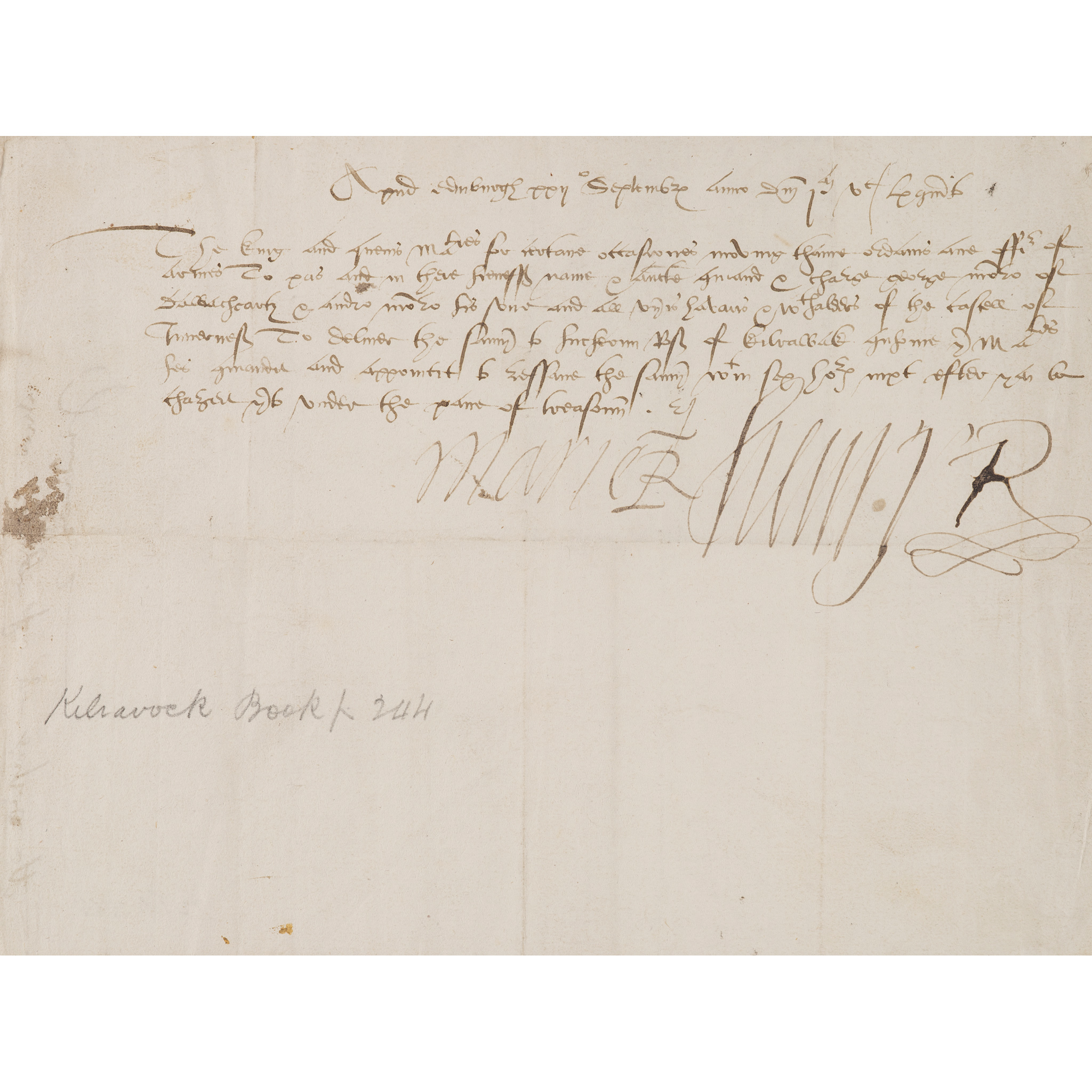
Mary, Queen of Scots (1542-1587), Queen of Scotland 1542-1567
Letter signed, 1565

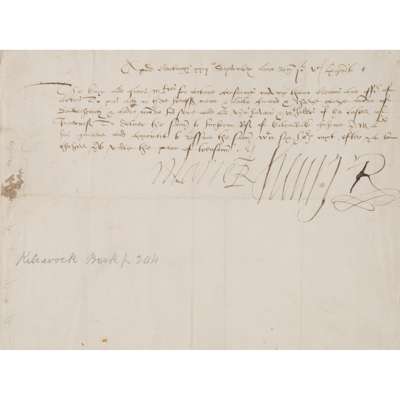
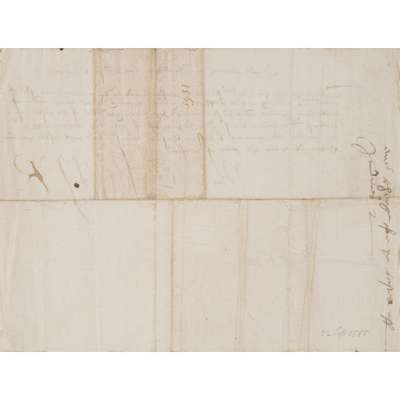


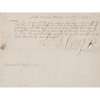
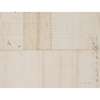
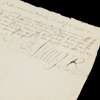
Auction: 18 June 2025 from 10:00 BST
Description
Letter signed "Marie R." with the joint name “Henry R.” (Henry Stewart, Earl of Darnley) to the Laird of Kilravock, regarding Inverness Castle: “The king and quenis majesties, for certane occasiones moving thame, ordains are officer of armes to pas, and in ther hienes name and auctorite command and charge George Monro of Dawachearty, and Andro Monro his sone, and all vtheris, havars and withhalderis of the castell of Innernes, to deliuer the samyn to Hueheoun Ros of Kilrawak, quhome ther majesties hes commandit and appointit to resaue the samyn, within sex howris nixt aftir thai be chargeit therto, vnder the pane of treasoun. /Marie R. Henry R.”, dated 22nd September 1565, 6 lines in a secretarial hand with the signatures below, 22 x 17cm, laid-down at corners only onto mount according to professional archival standards [Rose, Shaw & Innes p.244]
Footnote
Mary, Queen of Scots, ascended to the throne at just six days old. By the age of 19, she had been Queen Consort of France, widowed, orphaned, and returned to Scotland to assume personal rule in 1561. Her reign began as a Catholic monarch in a country undergoing profound religious change, following the rise of Protestantism led by the Lords of the Congregation and the outspoken reformer John Knox, who questioned whether her subjects were even obliged to obey her. Despite this hostility, Mary agreed to tolerate Protestantism and made no immediate attempt to alter the religious status quo.
In July 1565, Mary married her half-cousin, Henry Stuart, Lord Darnley. The union was met with widespread disapproval, not least from Queen Elizabeth I of England, who saw the marriage as a direct threat (both Mary and Darnley had strong claims to the English throne). Elizabeth dispatched Nicholas Throckmorton to Edinburgh to convey her displeasure. Within Scotland, the nobility voiced concerns that Mary had made such a consequential decision without broader consultation. Her half-brother, James Stewart, 1st Earl of Moray, joined forces with the Earls of Argyll and Châtellerault to lead a rebellion, known as the "Chaseabout Raid." Rumours circulated of plans to kidnap and separate the royal couple.
Though handsome and initially charming, Darnley soon revealed himself to be immature, arrogant, and frequently drunk. The marriage quickly deteriorated. In a dramatic and brutal episode, Darnley conspired with some of the same Protestant lords involved in the earlier rebellion to murder David Rizzio, Mary’s trusted Catholic secretary. Rizzio was stabbed to death in front of the pregnant queen on the 9th March 1566.
Less than a year later, on the night of the 9th February 1567, Darnley was found murdered at the royal residence of Kirk o’ Field, following an explosion at the house. Mary’s conspicuous absence that night fueled suspicion. James Hepburn, 4th Earl of Bothwell, was charged with the murder but acquitted. To the astonishment of many, Mary married Bothwell on the 15th May 1567. The scandal surrounding Darnley’s murder and her subsequent remarriage led to Mary’s arrest, imprisonment, and eventual forced abdication in favour of her infant son James VI, later James I.
The four letters presented here, dated September and October 1565 and co-signed by both Mary and Darnley, offer a rare glimpse into a brief period of apparent harmony in their marriage - James VI was conceived in October of that year. The letters concern the Sheriffdom of Inverness and control of the city’s castle, a strategically vital stronghold that had frequently changed hands. In 1562, Clans Munro and Fraser had seized the castle from George Gordon, 4th Earl of Huntly. In September 1565, Mary and Darnley appointed Hugh Rose of Kilravock as its keeper, only to return control to Huntly the following month. These abrupt changes reflect the volatile nature of court politics and shifting allegiances during Mary’s troubled reign.







